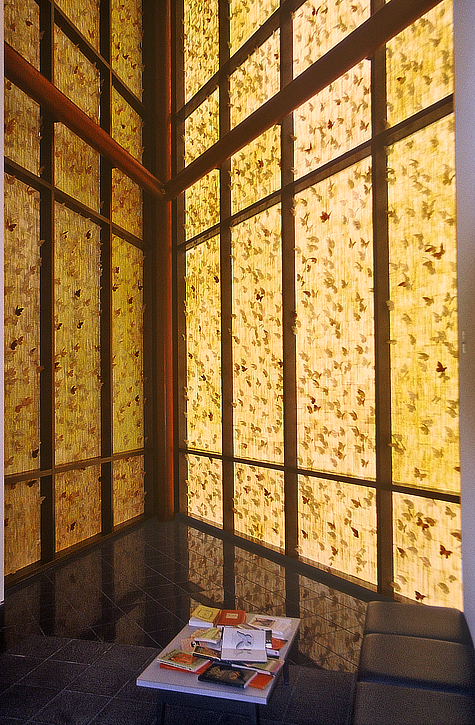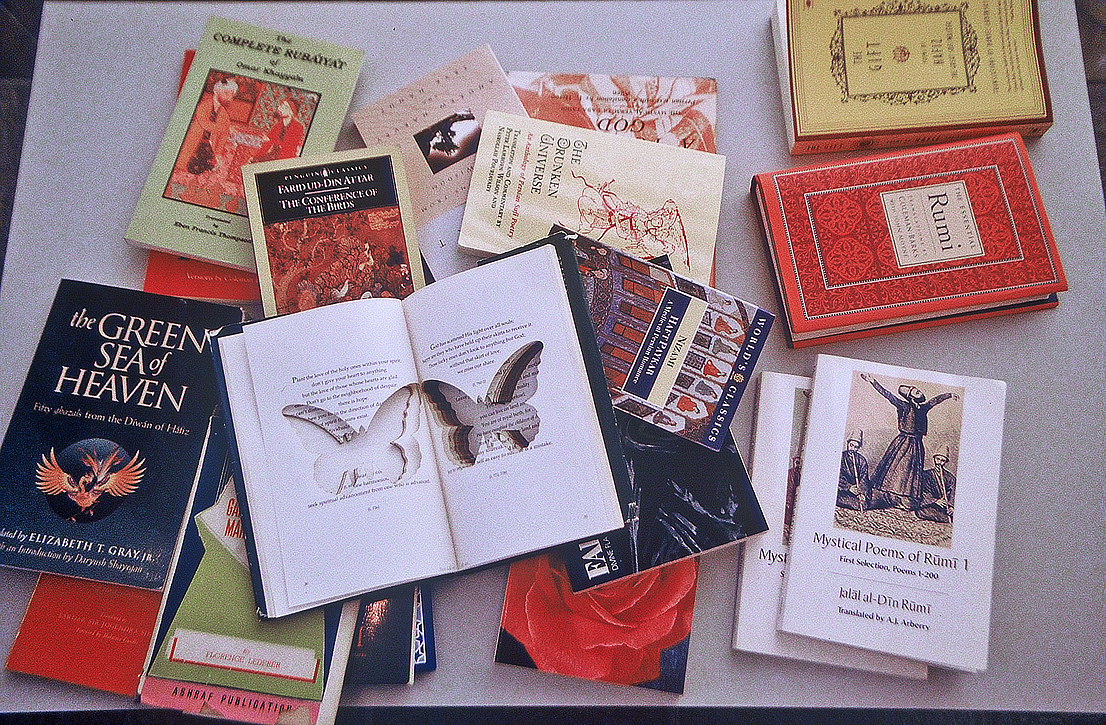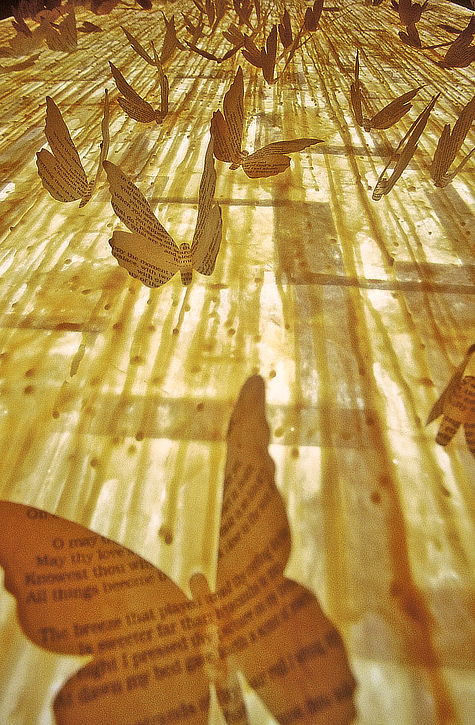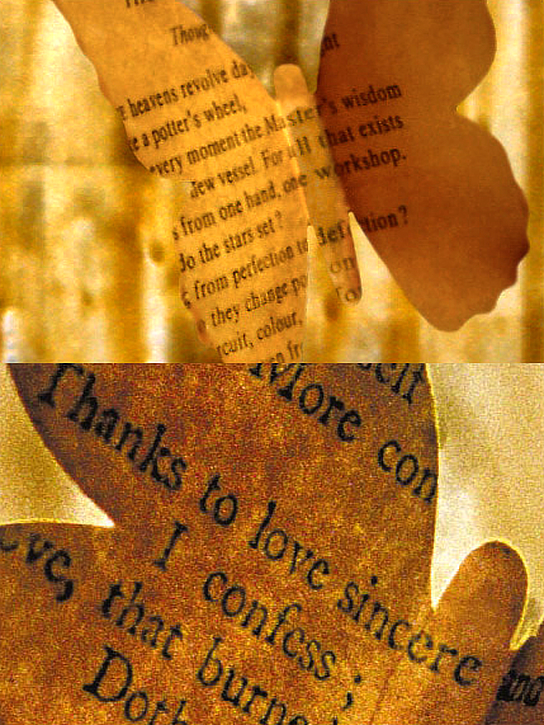Drawn to Light
Rice paper, beeswax, paper butterflies with poetry, Sufi poetry books; 30´ W x 35´ H
Drawn to Light was a site-specific installation for the Fullerton Art Museum in San Bernardino, California. The museum’s lobby windows were covered with delicate layers of overlapping rice paper, cut to resemble book pages, then coated with molten beeswax. As the wax cooled, it formed translucent veils that filtered the sunlight like stained glass, its surface marked by soft amber drips and glows. Across this luminous field, 3,000 paper butterflies—cut from pages of Sufi poetry and dipped in wax—appeared to alight upon the windows, each bearing its own burnished trace of transformation. Nearby, a small table held poetry books, some carved with butterfly-shaped voids, echoing the forms on the glass.
The installation invited both visual and spiritual reflection. In Sufi tradition, “taking up a corner” means gathering one’s scattered energies and focusing them toward the heart—the inner point of connection to the divine. Here, words gathered as wings, rising toward the light beyond the windows. The butterflies’ ascent mirrored the soul’s longing for illumination.
On another level, the work considered the nature of perception itself. Windows, like language, mediate our encounter with light. The beeswax surface tinted and filtered illumination, suggesting how words and ideas both reveal and obscure truth. To perceive the light uncolored—to know directly rather than through reflection—one must go beyond the window, beyond the text, toward the source itself.



